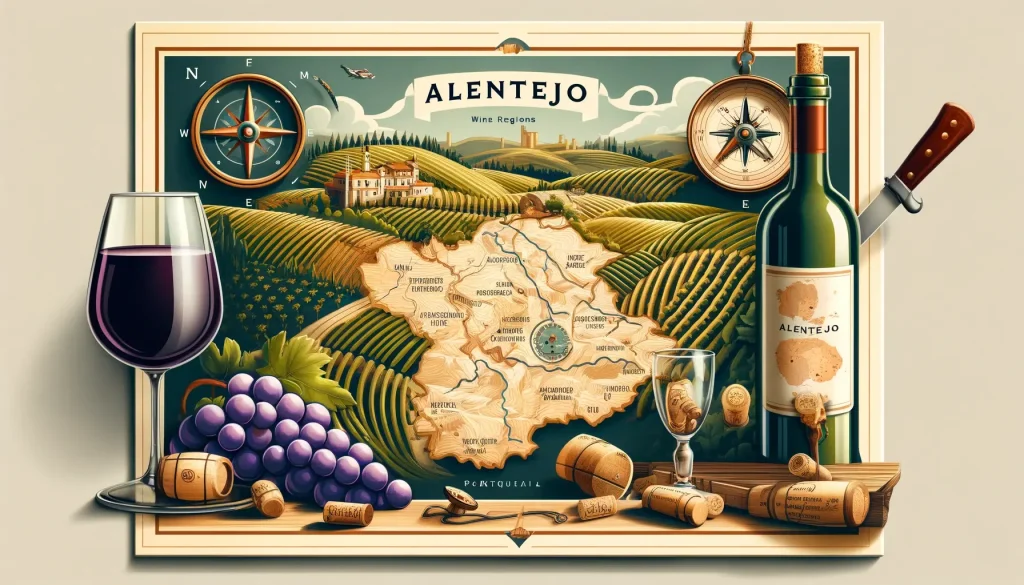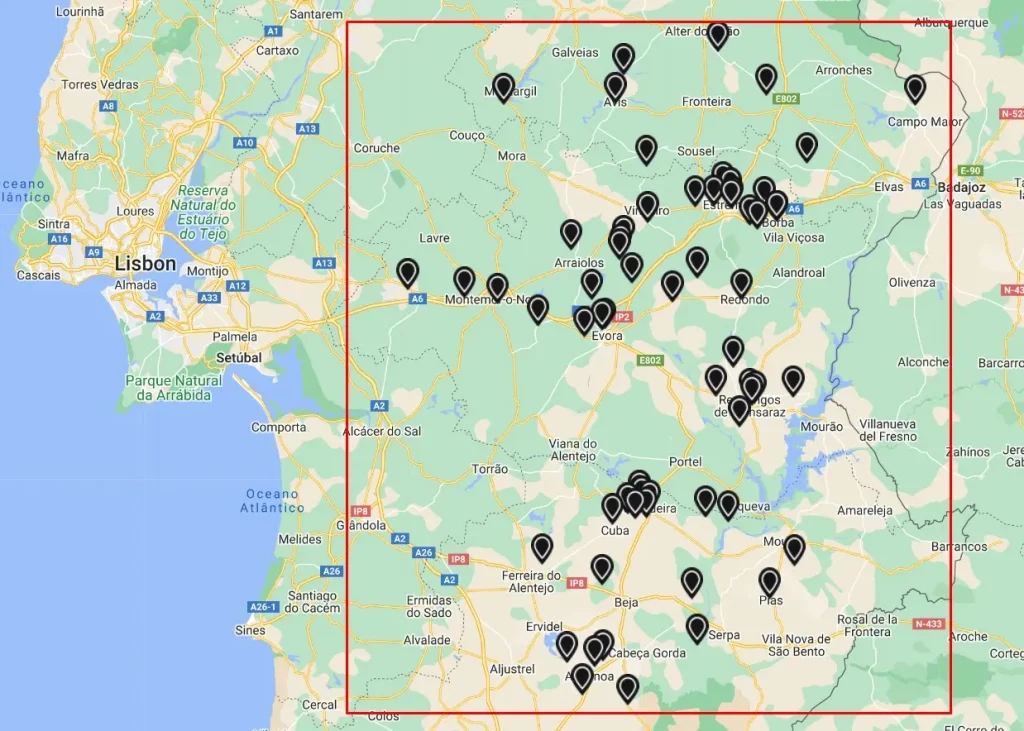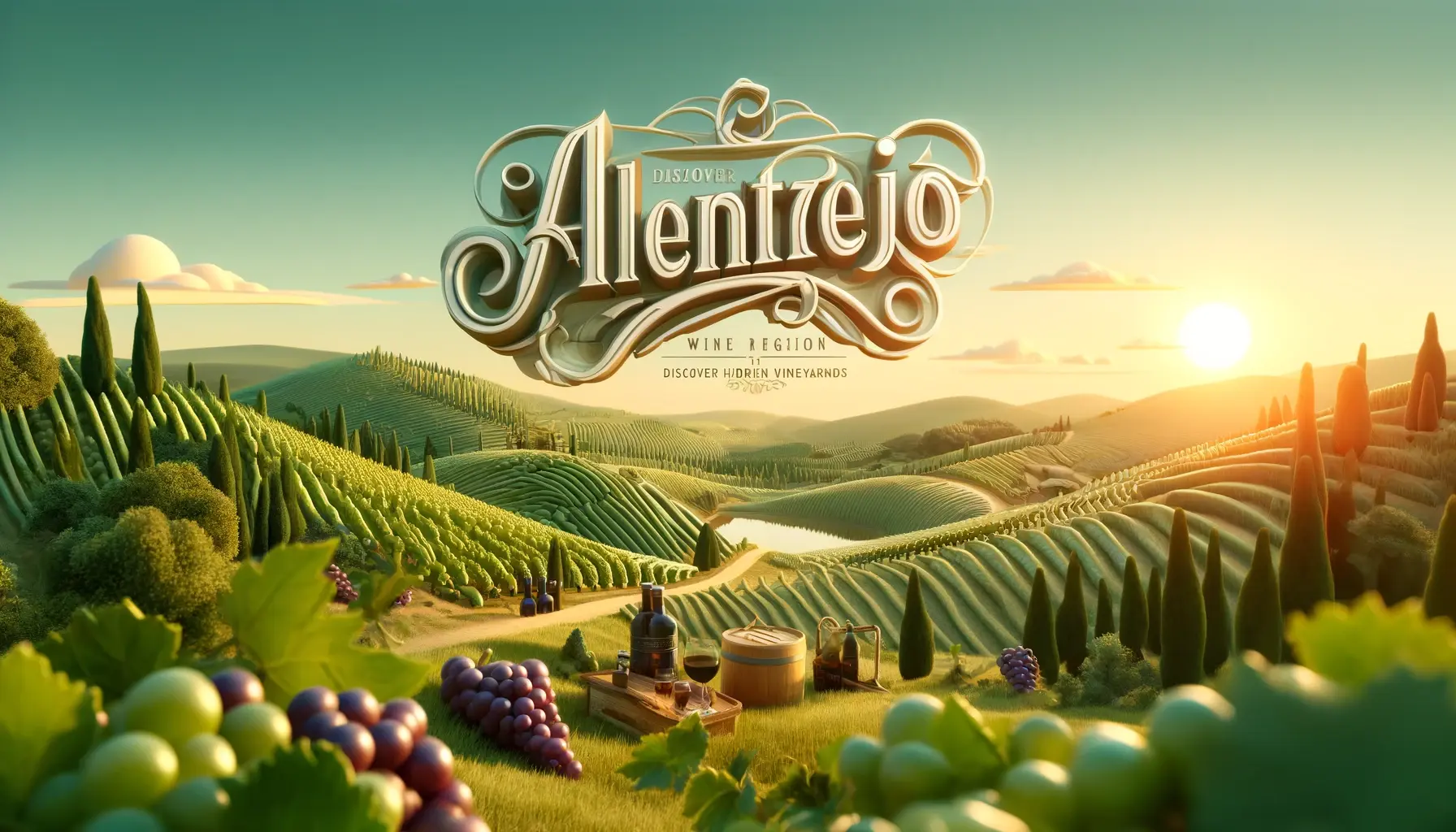Imagine stumbling upon a treasure map that leads you to hidden gems not listed in any tourist guide. That’s exactly what exploring the Alentejo wine region and its vineyards feels like! Nestled in one of Portugal’s most serene landscapes, these quaint, often overlooked wineries offer more than just wine; they provide a passport to the soul of Alentejo.
For those adventurous souls who thrive on discovering the road less traveled, Alentejo’s vineyards are a dream come true. The experience isn’t just about tasting exquisite wines but also immersing yourself in a lifestyle that celebrates simplicity and authenticity. It’s about connecting with locals who are passionate about their craft and eager to share their stories.
I remember my first visit; I was welcomed with open arms and treated to tales of heritage and tradition that made each sip feel like a history lesson. In this article, I’ll take you through these hidden lanes, where every turn brings a new story. You’ll learn how to find these secret spots and why they remain cherished by those lucky enough to uncover them.

Exploring Alentejo Vineyards
Tucked away in Portugal’s serene countryside, the Alentejo region is a hidden gem that offers an array of undiscovered vineyards, perfect for those looking to escape the usual tourist paths and immerse themselves in authentic local wine culture. With sprawling estates and family-run farms dotting the landscape, each visit promises a unique peek into the world of traditional winemaking.
For adventurers eager to explore these secluded spots, it’s crucial to have a good map and perhaps even a local guide. Many vineyards are not well-marked and can be tricky to find among the rolling hills. However, this search often leads to delightful encounters with vintners who are passionate about their craft and happy to share their knowledge with visitors. They might even invite you for a tasting right in their cellars!
Here’s what you might discover on your journey:
- Local Grape Varieties: Encounter rare indigenous grapes like Alicante Bouschet or Antão Vaz.
- Organic Practices: Many vineyards embrace sustainable methods, producing exquisite organic wines that reflect the purity of their environment.
- Innovative Techniques: From amphora-aged wines to modern twists on classic blends, Alentejo’s winemakers aren’t afraid to experiment.
Signature Grape Varieties of Alentejo
Alentejo, a sun-drenched region in Portugal, is renowned for its distinctive grape varieties that produce some truly unique wines. If you’re an adventurous soul eager to explore beyond the usual tourist paths and dive into authentic local experiences, learning about these grapes is a must. Here’s what makes them special.
- Alicante Bouschet: This grape stands out as it’s one of the few teinturiers—grapes with red flesh and juice—used in wine production globally. Originally from France, Alicante Bouschet has found a welcoming home in the Alentejo soils where it thrives under the hot sun, producing robust, deeply colored wines. It’s not just about the wine; visiting vineyards cultivating this rare variety offers a peek into innovative viticulture practices.
- Aragonez (Tempranillo): Known locally as Aragonez and internationally as Tempranillo, this variety is versatile and widely embraced by winemakers in Alentejo. The resulting wines are smooth with notes of berries and spices which pair perfectly with regional dishes like porco preto (black pork). For those who enjoy pairing food with wine, exploring Aragonez provides both a taste adventure and insight into local culinary traditions.
- Trincadeira: Adding to the charm of Alentejo’s vineyards is Trincadeira, which adapts well to the hot climate here. Wines made from Trincadeira are typically aromatic, filled with hints of herbs and ripe fruits making them ideal for an afternoon tasting session after exploring historic sites nearby.
- Antão Vaz: As you wander through white-washed villages under azure skies remember that Antão Vaz could be your next favorite white wine discovery! Loved for its tropical fruit flavors balanced with refreshing acidity it pairs beautifully with seafood caught fresh from Portuguese waters.
Exploring these vineyards not only satiates your palate but also connects you directly to Alentejano culture—a key aspect if you’re looking to avoid common tourist traps and engage deeply with locals. Each visit promises new insights into traditional methods preserved over generations alongside sustainable innovations that keep both vines and traditions alive.
So why not plan your journey around these signature grapes? You can create an itinerary including visits to small-scale producers learn more about organic practices or even participate in harvest festivals if the timing aligns! Let’s dive deep into what makes each grape variety special while savoring every sip along our travel routes.

12 Alentejo Vineyards to Visit
Venturing into the heart of Alentejo reveals a treasure trove of popular vineyards but also others that are less traveled but offer stunning views and unique vintages. If you’re keen on sipping wine where the grapes are as wild and free as your spirit, here’s where you should be headed:
Herdade do Mouchão
This vineyard is steeped in tradition and often missed by mainstream tours. Famous for its Alicante Bouschet, visiting Mouchão feels like stepping back in time. The ancient foot-treading tanks used during harvest season add a palpable touch of authenticity to your visit.
Cortes de Cima
Known for its innovative techniques in winemaking, especially with Syrah, this family-run estate offers a modern twist on wine production. What makes it special is its location – tucked away in the hills with breathtaking panoramic views that promise memorable sunset tastings.
Fitapreta Vinhos
Fitapreta Vinhos in Alentejo is a must-visit for wine enthusiasts. Nestled among rolling hills, this vineyard offers unique blends that showcase the region’s rich terroir and innovative spirit.
Adega do Monte Branco
Adega do Monte Branco is a must-visit for wine lovers. Nestled among rolling hills, this vineyard offers unique blends that capture the essence of Alentejo’s terroir.
Adega da Cartuxa
Adega da Cartuxa is a must-visit for wine lovers. Nestled near Évora, this vineyard is renowned for its Pêra-Manca reds. Enjoy a guided tour to learn about their unique winemaking process. This family-owned estate, sprawling across several hectares, focuses on both wine production and preserving a legacy. It offers a variety of wines that reflect its unique microclimates. Additionally, the panoramic estate includes a museum with an impressive collection of carriages, making it an attractive location for both wine and history enthusiasts.
Monte da Ravasqueira
Monte da Ravasqueira is known for its lush, scenic vineyards that stretch across the Alentejo landscape. Visitors often enjoy guided tours that showcase the sophisticated wine-making process and sample exquisite local varietals.
Adega José de Souza
Adega José de Souza Adega José de Souza is a charming, lesser-known gem nestled among the rolling hills of Alentejo. This vineyard offers an intimate glimpse into traditional winemaking, where passion and craftsmanship shine through in every bottle.
Herdade do Sobroso
Herdade do Sobroso Winery, situated near the Alqueva dam, offers a tranquil retreat for visitors. The wines produced here capture the distinct microclimate and terroir of the region, featuring robust reds and aromatic whites. Visitors can enjoy guided tastings with picturesque countryside views, and engage in activities such as bird watching and nature walks.
Herdade do Esporão
Herdade do Esporão, a pioneer in Portugal’s winemaking since the 1970s, is dedicated to sustainable practices across all areas of its operation. The estate not only produces a wide range of wines but also serves as an educational hub for sustainable viticulture. Visitors can enjoy various tours and tastings, as well as exceptional dining experiences at the on-site restaurant.
João Portugal Ramos
Founded by a respected winemaker, this winery combines traditional Alentejo styles with modern techniques to create a unique range of wines. It offers an immersive experience including vineyard tours and tastings, allowing visitors to deeply understand the art and science behind their winemaking process.
Santa Vitória
Santa Vitória, part of the Vila Galé Group, focuses on high-quality and sustainable wine production. The winery offers a peaceful environment for tastings and tours, emphasizing both the enjoyment of their wines and environmental responsibility. This approach reflects their commitment to hospitality, quality, and sustainability.
For those adventurous at heart: Pack light but bring sturdy shoes for vineyard walks. Always check local travel advisories before planning your trip.
Here’s how you can make the most out of these visits:
- Schedule a guided tour to learn about sustainable viticulture practices that many hidden vineyards embrace.
- Join a tasting session; some vineyards may offer food pairings with local cuisine which enhances the experience.
- Don’t forget to chat with the winemakers if possible – their stories add an enriching layer to each bottle you taste.
When planning your route, consider integrating other cultural experiences nearby such as olive oil tastings or historical sites like Evora’s Roman ruins. This not only maximizes your travel experience but also supports local communities.
Remember, exploring Alentejo’s hidden vineyards offers more than just wine; it’s about discovering timeless landscapes and stories poured from generations past into every glass. Ready to explore? Grab your map and let’s set off on this exquisite journey!
Planning Your Visit
When you’re gearing up to explore the hidden vineyards of Alentejo, timing is everything. Most local wineries are small and family-owned, often requiring appointments for a more personalized experience. To make the most out of your visit, aim for the spring or early autumn months; not only is the weather just right—mild and pleasant—but it’s also when the vineyards are lush and vibrant.
To make your trip smoother:
- Check this route map

- Download Offline Maps: Cell service can be spotty in some areas.
- Check Opening Hours: Some smaller vineyards may require appointments.
Interactive elements such as checklists for must-visit vineyards or a budget planner for your wine purchases could further enhance your planning. Remember, part of the adventure lies in discovery—so don’t shy away from taking a road less traveled! Who knows? You might just stumble upon your new favorite wine in one of Alentejo’s hidden corners.
Here’s how you can plan:
- Book in Advance: Reach out to wineries at least a few weeks ahead. Many offer tours that include tastings and sometimes even meals prepared with local ingredients.
- Transport Options: Renting a car might be your best bet for flexibility and reaching off-the-beaten-path spots. Public transport options are limited in these rural areas.
- Accommodation Tips: Consider staying in local guesthouses or agritourism spots. They offer a genuine taste of Alentejo hospitality and often provide insights into wine-making by the hosts themselves.
To truly immerse yourself in this unique region, engage with locals as much as possible. Learn a few phrases in Portuguese—it goes a long way in showing respect and making connections. Also, check if any festivals or local markets align with your visit; they can be golden opportunities to enjoy Alentejo’s culture fully.
Finally, pack smart:
- Comfortable walking shoes are essential.
- A good quality camera—you’ll want to capture the stunning landscapes!
- A notebook for jotting down details about your favorite wines or vineyard stories.
By following these tips, you’ll ensure an authentic and memorable adventure through Alentejo’s hidden vineyards!
Final Notes
Exploring the hidden vineyards of Alentejo has been an absolute thrill and I’m glad I could share this journey with you. If you’re like me, always on the lookout for unique travel experiences away from the bustling tourist spots, Alentejo’s serene vineyards offer just that.
Here’s what makes these hidden gems stand out:
- Authenticity: Each vineyard in Alentejo tells a story of tradition and passion, deeply rooted in every bottle.
- Scenery: The landscapes are breathtaking, perfect for those who cherish nature and peaceful surroundings.
- Exclusive Tastes: You get to taste wines that aren’t widely exported, making each sip a rare delight.
For those planning to venture into these off-the-beaten-path locales, here are some practical advice:
- Connect with locals: They know the best spots and times to visit.
- Use local transit options: It’s eco-friendly and often leads to unplanned adventures.
- Pack wisely: Include comfortable footwear for vineyard tours and a notebook to jot down your favorite wines.
Lastly, don’t forget to engage with the winemakers. Their insights add so much more value to your wine tasting experience—it’s like getting a behind-the-scenes peek into their craft!
Planning this kind of trip doesn’t just satisfy your wanderlust; it supports local communities and promotes sustainable tourism practices as well. So why not grab a map and start marking your must-visit spots?
If you’re gearing up for an unforgettable adventure in Alentejo or any other hidden locale around the globe check out our other guides for Portugal. They’re packed with all you need—from checklists to budget planners—to ensure your journey is smooth sailing (or should I say vinous bliss?). Safe travels!
